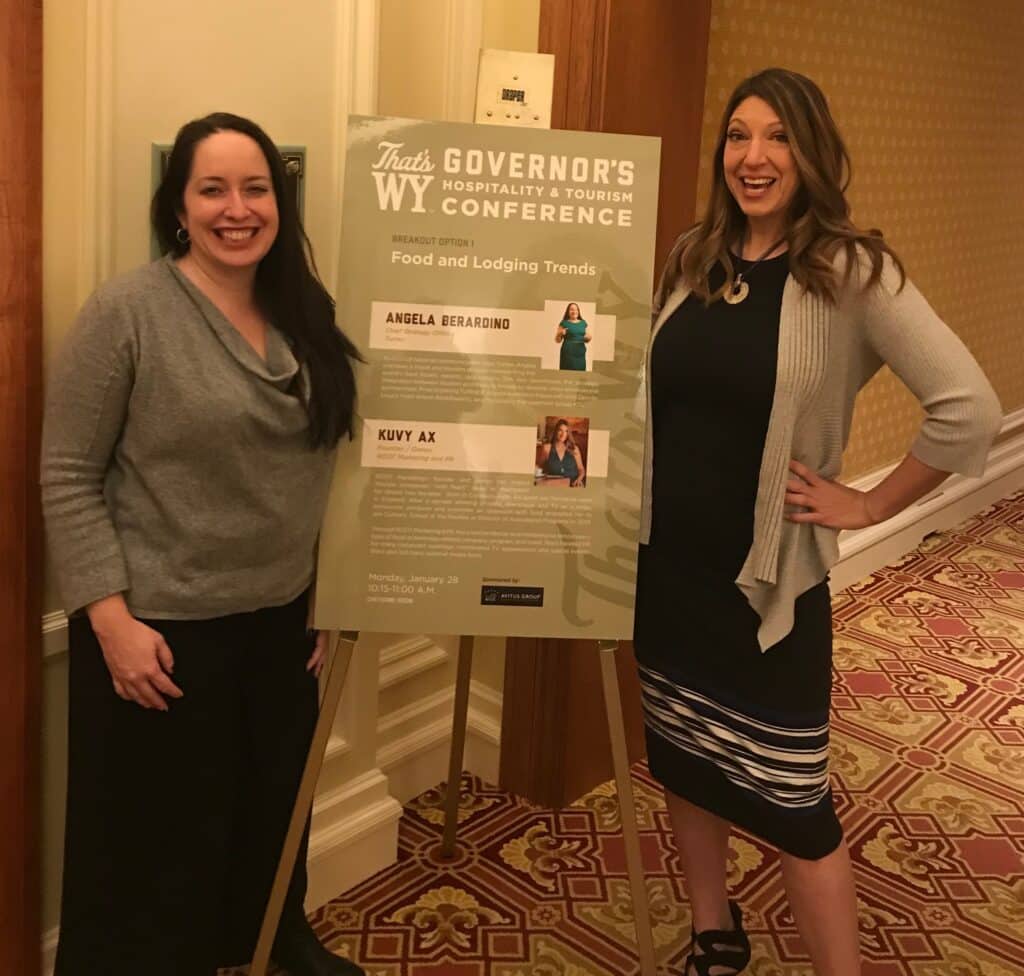Part 1 of our series on Thought Leadership. Click here for Part 2, The Importance of Awards. Make sure to follow us on social media for more blogs on using thought leadership to get ahead.
In today’s competitive landscape, PR strategies must be multifaceted, incorporating a variety of tactics beyond traditional media pitches and press releases, and they need to elevate you above a sea of “same old same old,” which means doing things that your competitors aren’t doing – even if it’s out of your comfort zone. Speaking engagements position you/your company spokesperson as an industry authority, increasing your brand’s visibility AND credibility at the same time. In fact, there are many reasons to engage in key industry and cultural events and conferences, including:

Building Brand Awareness: Speaking engagements allow companies to showcase their expertise, products, and services to a wider audience. This increases brand visibility and awareness among key audiences.
Generating Media Coverage: These opportunities can lead to press coverage, as it’s common for media to attend and report on topics covered at conferences and events. It can be an effective way to make a major announcement, especially if media is confirmed to attend the session.
Networking: Speaking at industry events and conferences provides a valuable opportunity to network with other professionals within your industry, and foster relationships that can be beneficial to your business.
Establishing Thought Leadership: Speaking engagements provide a platform for leaders to demonstrate their deep knowledge and understanding of the subject matter, and to share unique insights, innovative ideas, and forward-thinking perspectives. They are also an opportunity to showcase your latest innovations, products, and achievements.
Standing Out from Competitors: As we mentioned in the intro, by participating in speaking engagements, a company can elevate itself above its competitors who may not be as visible or vocal in the industry.

Reach the right people
Securing speaking opportunities requires a lot of time and dedicated planning, often beginning 6-9 months in advance, depending on the event. To get the most out of speaking engagements, take these critical steps before pursuing or committing to an opportunity:
Identify your target audience: Determine who you aim to reach through these speaking engagements—whether it’s potential customers or clients, influencers, industry peers, or the press. Knowing your audience helps you pick the right event(s.)
Strategize: Prioritize events that align best with your goals and offer the most potential impact. Research and create a shortlist of events that attract your target audience.
Prioritize quality over quantity, but try to say yes to anything that can help you get practice and get comfortable for when that really big opportunity comes up.
Here are some of the top events and conferences we recommend targeting for folks in the food and beverage industries:
• Fast Company Innovation Festival, New York City, September 16-19, 2024
• Winter Fancy Foods Show, Las Vegas, January 19-21
• National Products Expo West, Anaheim, CA, March 4-7, 2025
• SXSW, Austin, TX, March 7-15, 2025
• The National Restaurant Show, Chicago, May 17-20, 2025
• Summer Fancy Food Show, New York City, June 29 – July 1, 2025
You’ll find a more complete list in our blog, “Reputation and Community Building Through Events and Networking”


Make it Powerful
Determine your key messages: Clearly define the core messages you want to convey. Having well-established key messages will boost your confidence and ensure you deliver a coherent and impactful presentation. Our blog “PR 101” gives tips on coming up with those invaluable Key Messages.
Practice storytelling techniques: Craft compelling stories using anecdotes, data, and real-life examples to enhance your narrative. Practice, practice, practice – including videoing yourself on your phone to see how you look/sound, and for timing.
Physical supporting elements such as presentation models or product samples create visual interest and reinforce your message.
Associated Costs
Clients often ask us if speaking engagements are paid. The answer is: it depends on the event or conference. Some speakers (more likely at bigger events) are paid a stipend and expenses. Some aren’t paid but don’t cost the speaker anything, although you may need to cover your travel expenses. For some trade shows, you may need to be an exhibitor to be considered for a speaking gig.
Increasingly, speaking opportunities are bundled with integrated marketing campaigns. This could involve costs for event promotion of your brand through materials and social media, advertising on the event’s website, sponsorship of the speaking panel, additional event tickets for colleagues, gift bag inclusion, logo placement on step-and-repeat banners, and inclusion in press releases announcing participants and sponsors.


Getting the Most out of the Opportunity
Once the speaking engagement has been confirmed, don’t forget to promote it! Not only to increase your reputation as a thought leader but also to potentially increase attendance of your seminar, as well as to secure interviews with attending media.
Need Some Help?
A PR team can help you figure out strategy, goals, and plans; find and pitch the right events; help with your key messages, script, and presentation; and help you practice until you’re ready for the Big Time. They can craft messaging around the opportunity for your social media posts and your email newsletter; and if it’s a big event and you’re the keynote, send out a news release about it. They can also figure out which media might attend the event and invite them to come to your session, offering an on-site interview.
We would love to help! Drop us a note via our website here so we can chat about how to support you.

Photos courtesy of Joe Dobrow, Bryan Beasley, Steve Z Photography, Food & Wine






